Match list I with list II and select the correct option.
List IList IIA.GemmulesI.AgaveB.Leaf-budsII.PenicilliumC.BulbilIII.Water hyacinthD.OffsetIV.SpongesE.ConidiaV.Bryophyllum
A-IV, B-V, C-I, D-III, E-II
A-IV, B-III, C-II, D-I, E-V
A-III, B-V, C-IV, D-II, E-I
A-IV, B-I, C-V, D-III, E-II
The correct Answer is:A
To solve the question of matching items from List I with List II, we will analyze each item in List I and find its corresponding match in List II based on the characteristics of each reproductive structure.
1. Identify Gemmules (A):
- Gemmules are a form of asexual reproduction found in sponges. They are internal buds that can survive harsh conditions.
- Match: A (Gemmules) → IV (Sponges)
2. Identify Leaf-buds (B):
- Leaf-buds are structures that can develop into new plants and are commonly associated with vegetative reproduction in plants like Bryophyllum.
- Match: B (Leaf-buds) → V (Bryophyllum)
3. Identify Bulbil (C):
- Bulbils are a type of vegetative reproduction found in plants such as Agave. They are small bulbs that can grow into new plants.
- Match: C (Bulbil) → I (Agave)
4. Identify Offset (D):
- Offsets are a type of vegetative reproduction that occurs in plants like Water Hyacinth. They are lateral shoots that develop into new plants.
- Match: D (Offset) → III (Water hyacinth)
5. Identify Conidia (E):
- Conidia are asexual spores produced by fungi such as Penicillium. They are involved in the reproduction of these organisms.
- Match: E (Conidia) → II (Penicillium)
Final Matches:
- A → IV (Sponges)
- B → V (Bryophyllum)
- C → I (Agave)
- D → III (Water hyacinth)
- E → II (Penicillium)
Correct Option:
The correct option based on the matches is:
- A-IV, B-V, C-I, D-III, E-II
Conclusion:
The correct answer is the first option.
---
- Gemmules are a form of asexual reproduction found in sponges. They are internal buds that can survive harsh conditions.
- Match: A (Gemmules) → IV (Sponges)
- Leaf-buds are structures that can develop into new plants and are commonly associated with vegetative reproduction in plants like Bryophyllum.
- Match: B (Leaf-buds) → V (Bryophyllum)
- Bulbils are a type of vegetative reproduction found in plants such as Agave. They are small bulbs that can grow into new plants.
- Match: C (Bulbil) → I (Agave)
- Offsets are a type of vegetative reproduction that occurs in plants like Water Hyacinth. They are lateral shoots that develop into new plants.
- Match: D (Offset) → III (Water hyacinth)
- Conidia are asexual spores produced by fungi such as Penicillium. They are involved in the reproduction of these organisms.
- Match: E (Conidia) → II (Penicillium)
- A → IV (Sponges)
- B → V (Bryophyllum)
- C → I (Agave)
- D → III (Water hyacinth)
- E → II (Penicillium)
The correct option based on the matches is:
- A-IV, B-V, C-I, D-III, E-II
The correct answer is the first option.
Topper's Solved these Questions
- REPRODUCTION IN ORGANISMS BOOK - VMC MODULES ENGLISHCHAPTER - REPRODUCTION IN ORGANISMS EXERCISE - EFFICIENT
50 Videos
- PRINCIPLES OF INHERITANCE AND VARIATIOBOOK - VMC MODULES ENGLISHCHAPTER - PRINCIPLES OF INHERITANCE AND VARIATIOEXERCISE - IMPECCABLE
56 Videos
- REPRODUCTIVE HEALTHBOOK - VMC MODULES ENGLISHCHAPTER - REPRODUCTIVE HEALTHEXERCISE - Chapter Exercise-C
10 Videos
Similar Questions
Match the List I with List II and select the correct option.
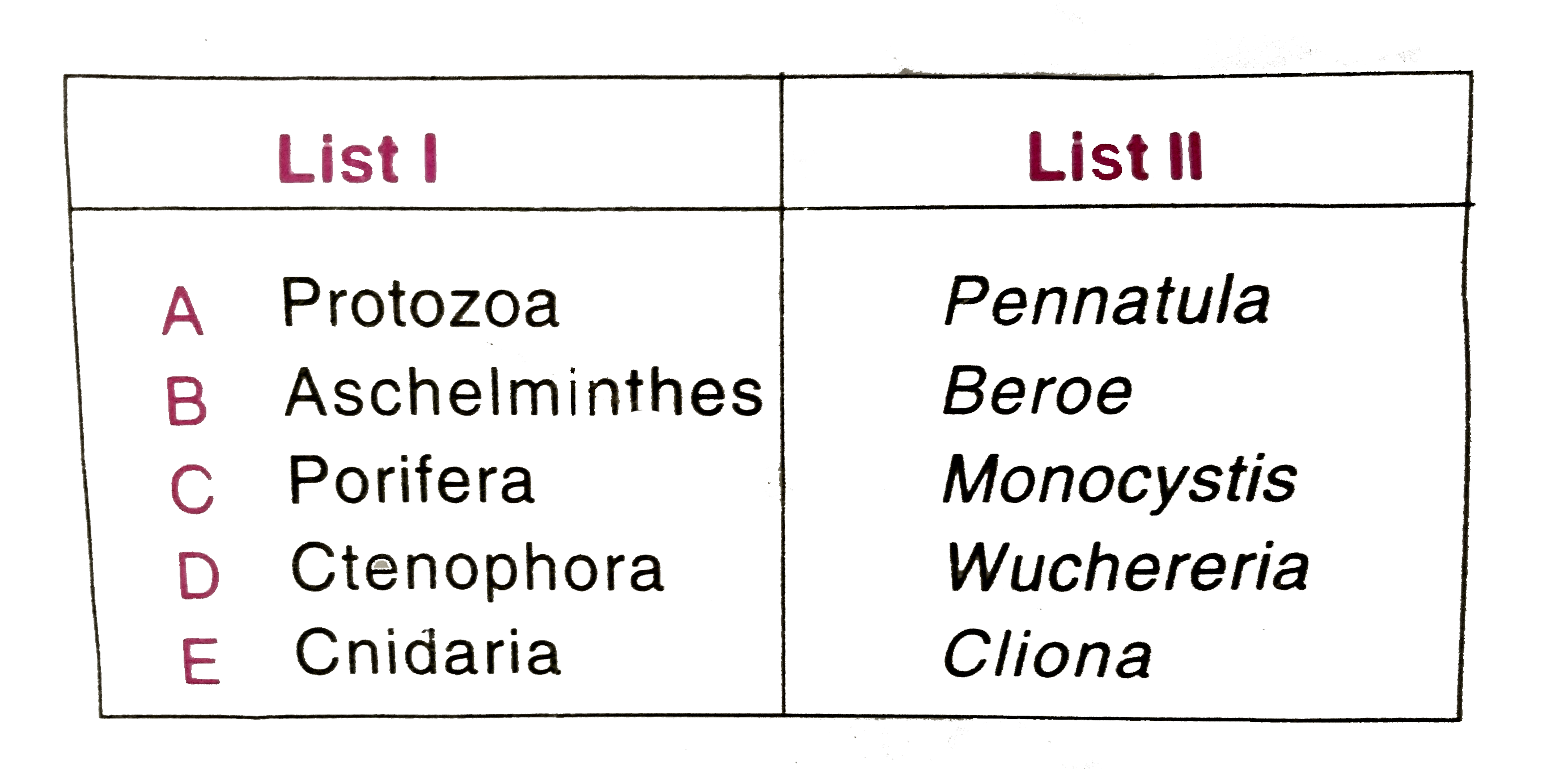
View SolutionMatch List I and List II and select the correct option
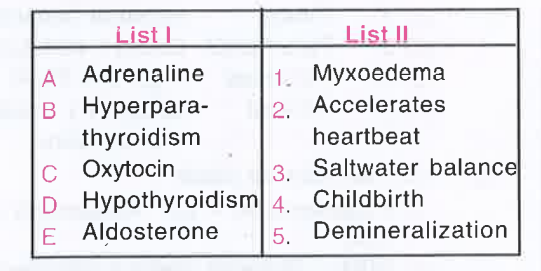
View SolutionMatch list I with list II and select the correct answer :

View SolutionMatch list I with list II and select the correct answer :

View SolutionMatch List-I with List-II and select the correct answer :
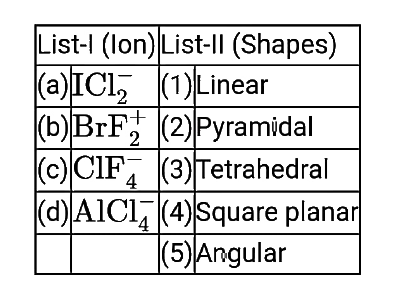
View SolutionMatch List - I with List - II and select the correct answer.

View SolutionMatch list I with list II and give the correct answer :

View SolutionMatch List I with List II and choose the correct answer
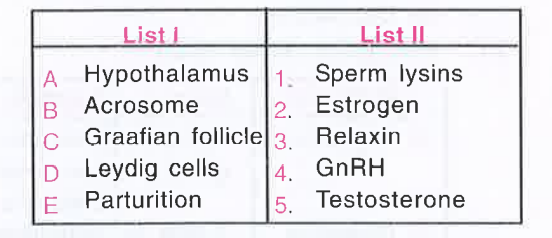
View SolutionMatch List - I and List - II

View SolutionMatch List - I and List - II .
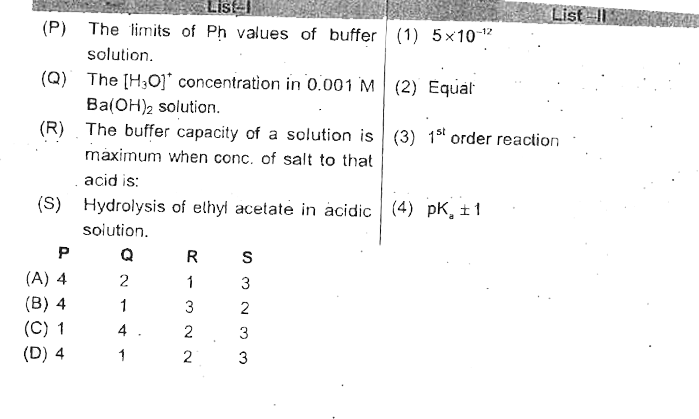
View Solution
